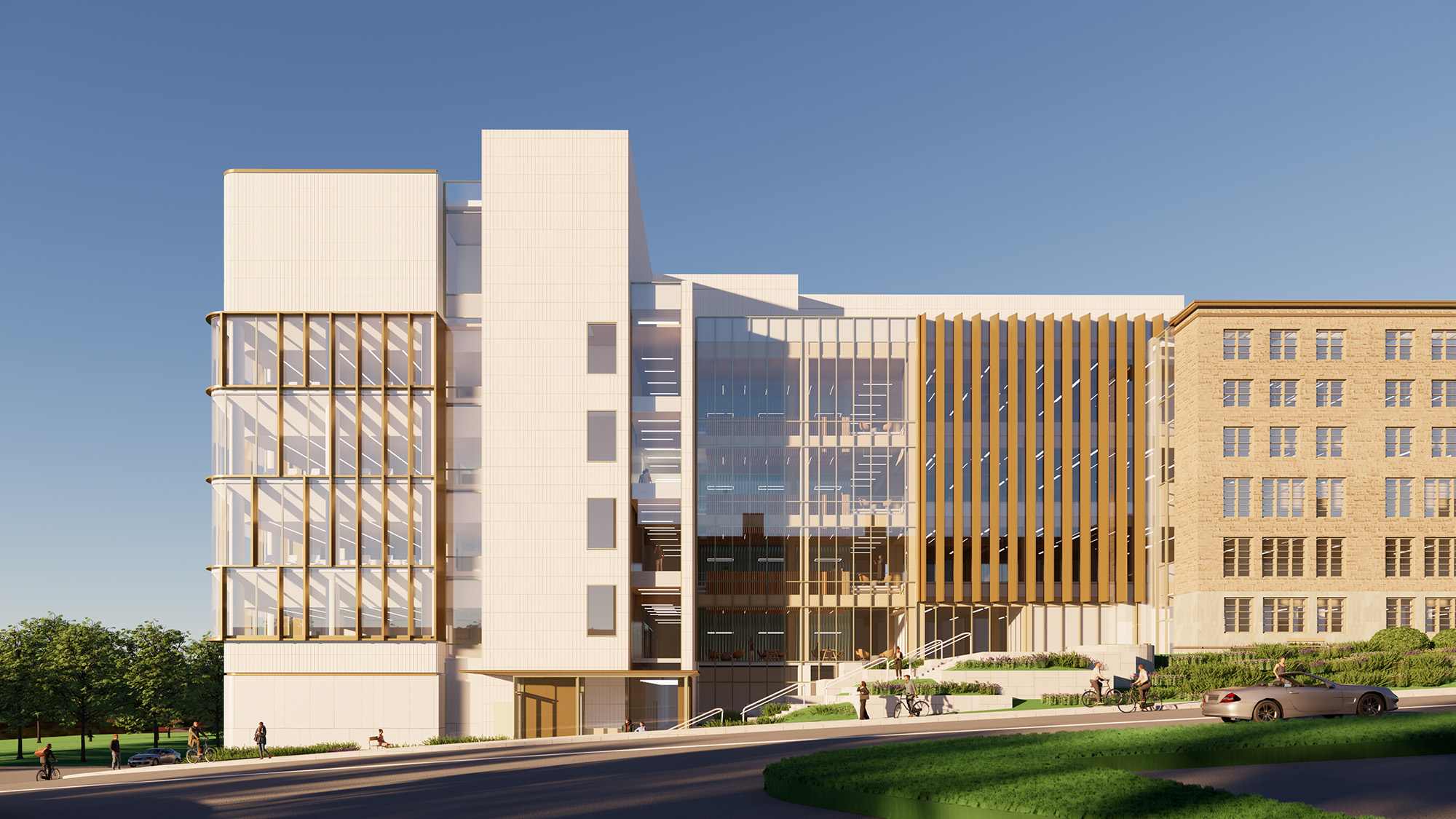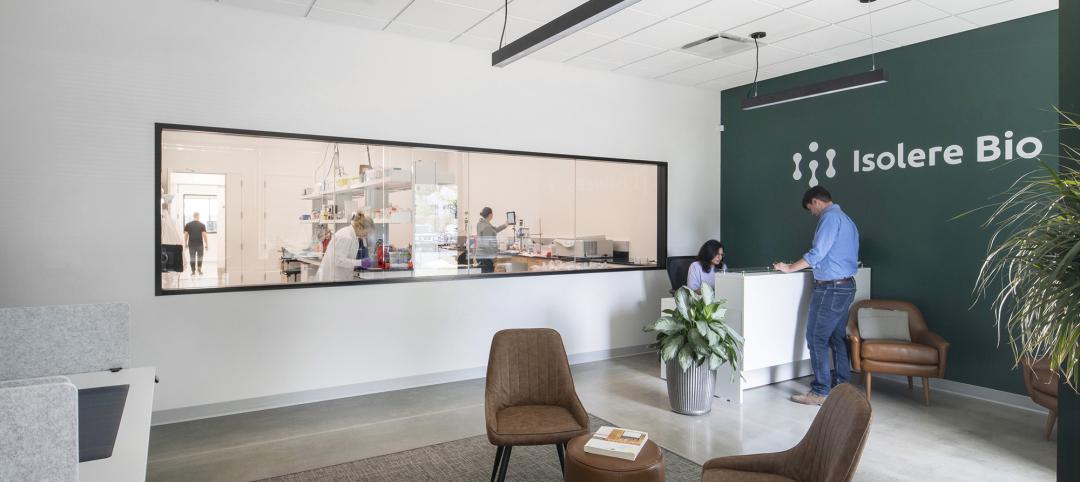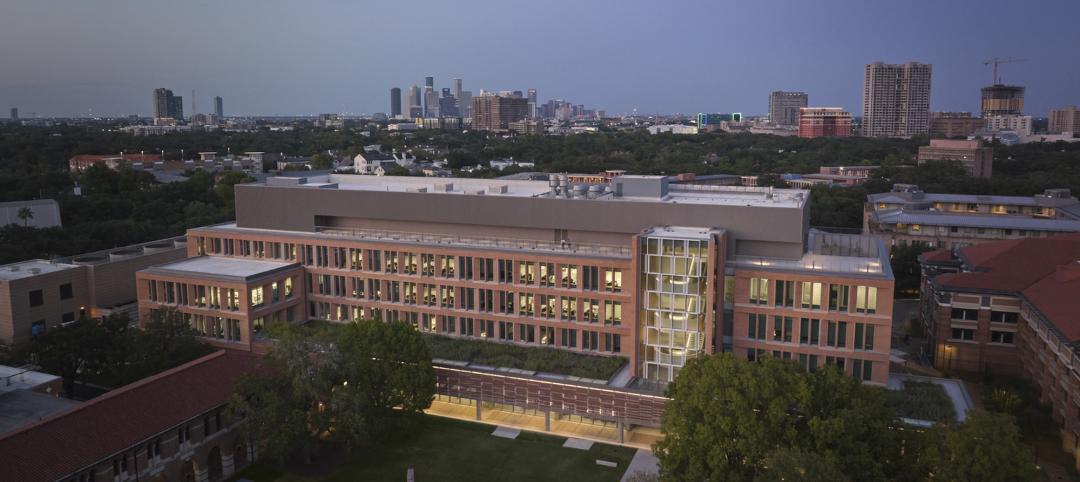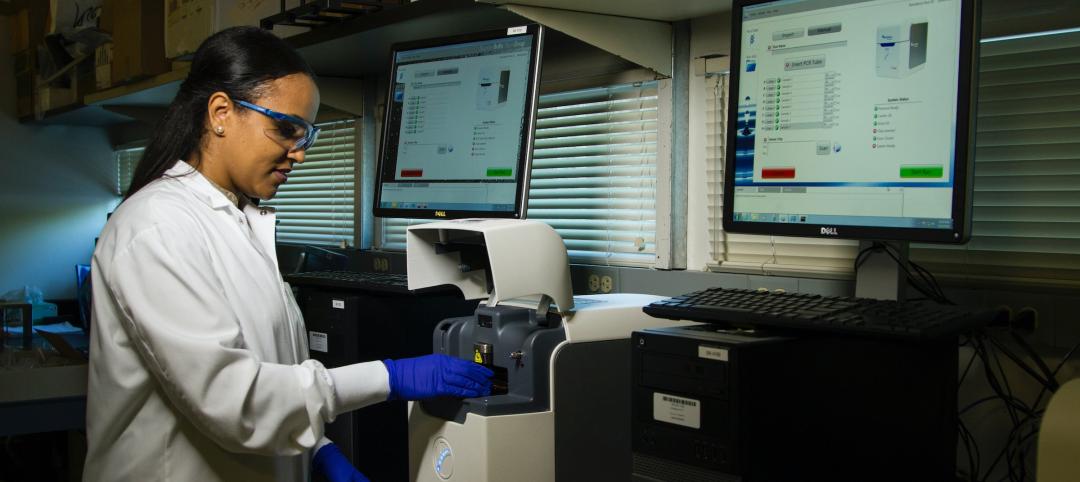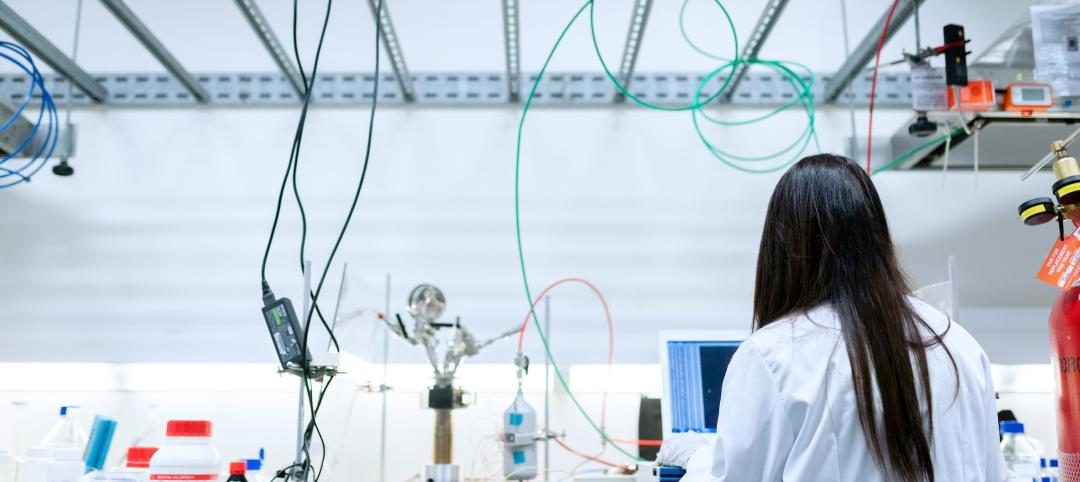Construction on the Atlantic Science Enterprise Centre (ASEC) has begun. Designed by Diamond Schmitt, in association with EXP, the new ASEC facility will provide federal scientists and partners with state-of-the-art space and equipment to collaborate on research opportunities, understand, protect and sustain Atlantic freshwater and coastal ecosystems in Canada. The design of the new building will reflect the heritage of the site, while establishing an open and inclusive environment that makes aquatic science more accessible.
The new ASEC will occupy the former home of the Collège Notre-Dame-d’Acadie which was originally founded and run by the Sisters of Notre-Dame-du-Sacré-Coeur. Opening in 1949, it was the first institution of higher education for Acadian women. The building was purchased by the Government of Canada in 1982 and reopened in 1985 as the Gulf Fisheries Centre.

Through consultation with the Sisters, the prominence of the Collège’s main west heritage façade will be retained and serve as a principal element in Diamond Schmitt’s scheme. It will be centrally positioned and anchor the new facility, with the existing main entrance remaining as the principal entry point. The design will interpret the building’s historical pavilion character and strive to commemorate its origins by integrating and adapting key elements and spaces into the site’s now expanded program.
Atlantic Science Enterprise Centre (ASEC) design
Visitors and staff alike will be welcomed into the building through a full-height, four-storey Atrium and skylit Galleria which will serve as an exhibition space to commemorate the Sisters, provide a place for science on display, recognize Indigenous communities, and serve as a place for gathering. The Atrium and Galleria will act as the connective tissue between the building’s different programming components, while also establishing the importance of the public realm which includes a flexible multipurpose room, Mawiomi—an Indigenous Gathering space, informal and formal meeting spaces of varying sizes.
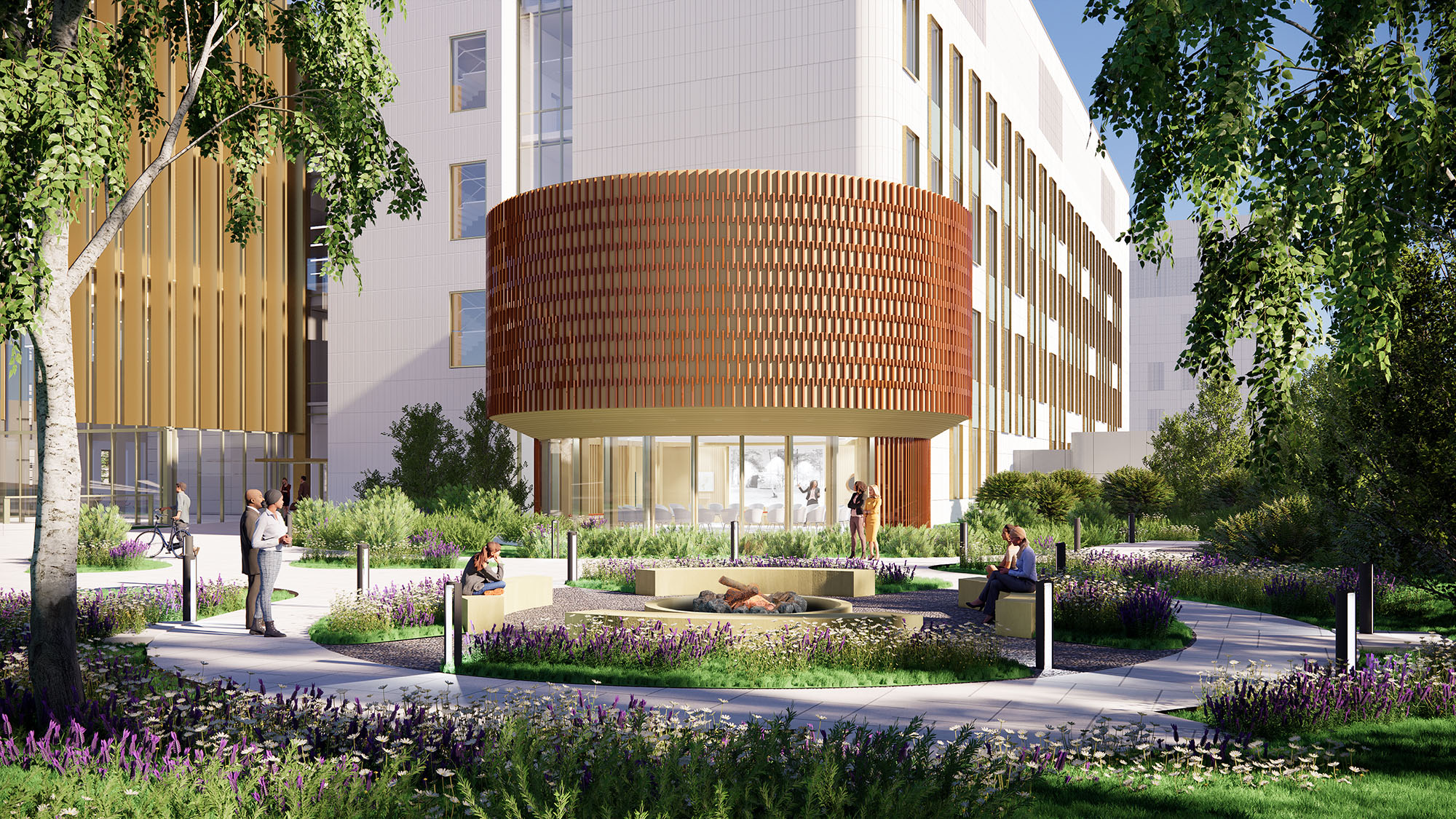
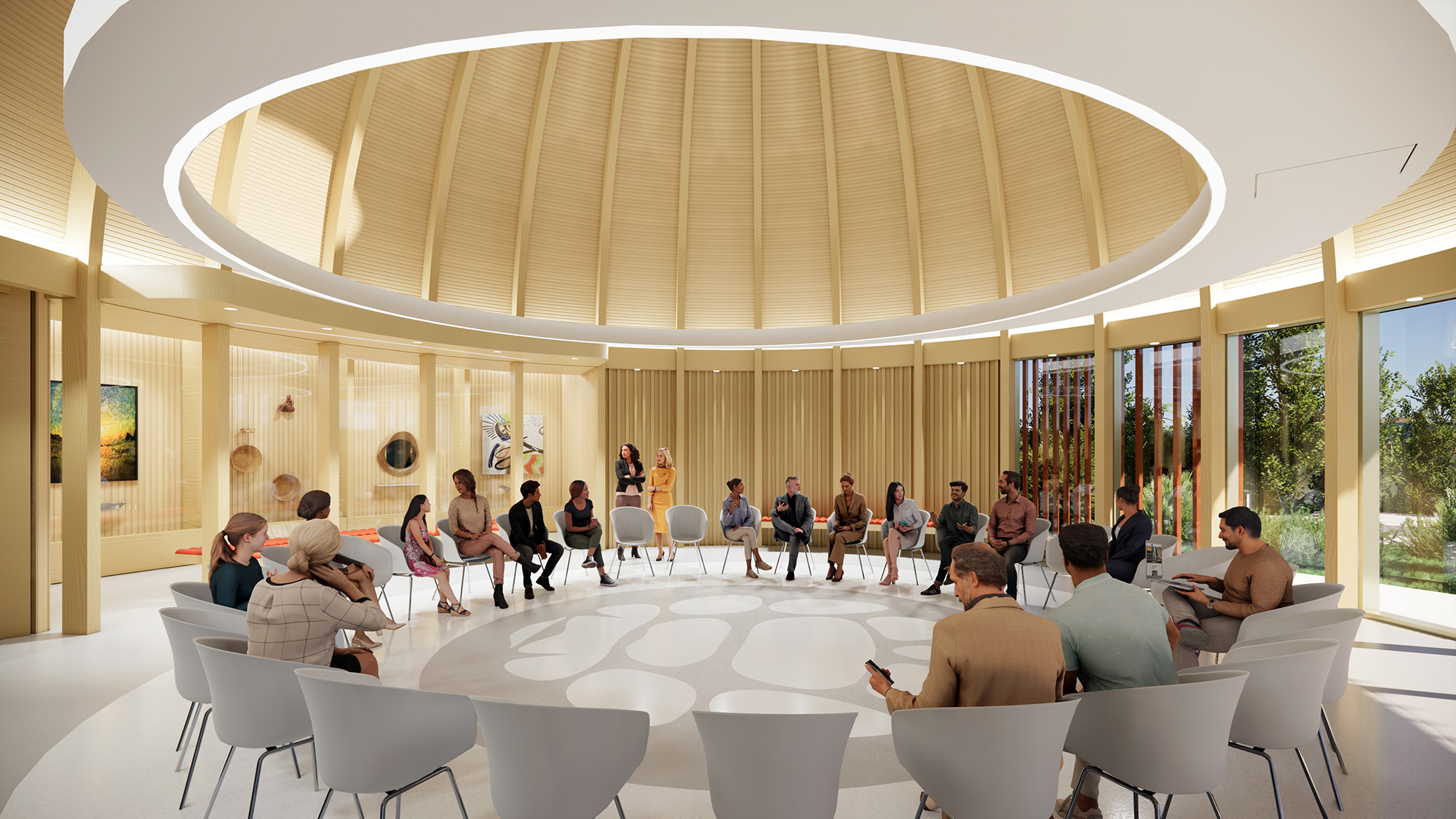
The net-zero carbon facility will allow the scientific work it will host to be advanced in an energy efficient and sustainable manner. Science areas will be organized around the creation of neighborhoods that group similar types of investigation together, encouraging the sharing of resources and equipment. This plan creates synergies between those groups, while also providing opportunities to foster cross-disciplinary collaborations. Laboratory space will be well lit with daylight and views, be universally accessible and adapt easily to the daily and future needs of occupants as their research evolves.
A key objective of the ASEC project is to establish new partnerships with First Nations and Indigenous groups through extensive engagement and visioning sessions. Led by Mi’kmaq Elder Noel Millea, Indigenous consultation will seek to create a welcoming space for Indigenous employees and visitors alike, and offer an inclusive environment where Indigenous ceremonies, storytelling, meetings, and cultural training can take place. Indigenous ways of knowing and being will inform the building’s design in a number of ways.
Large open spaces, flooded with natural light will offer places of gathering, spaces for learning and collaboration, and talking circles.The use of wood and glazing will provide a sense of warmth and belonging and open up the facility towards the outdoors, creating connections with the natural surroundings. Visual representations of Mi’kmaq, Wolastoqiyik and Passamaquoddy culture will be found throughout the new facility and its landscape.
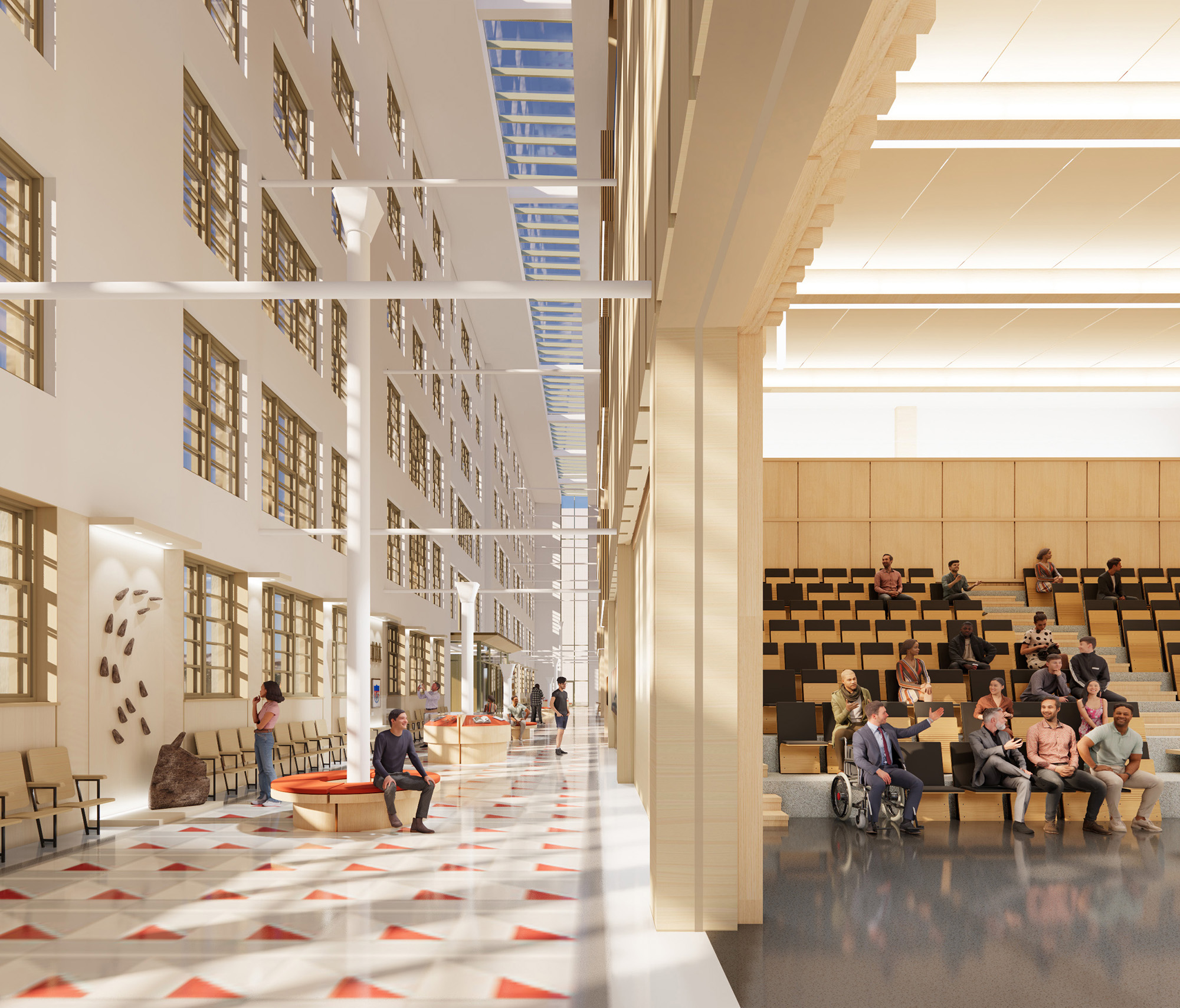
The goal of the overall planning and design approach of the new Atlantic Science Enterprise Center is to create a collaborative work environment not only within the laboratories, but with the Department of Fisheries and Oceans headquarters and open partner office areas. This extends into the social spaces where collaborative zones are clustered around the atrium, connecting the floors both physically and visually, and on all levels, bringing together the various partners sharing the facility.
The Atlantic Science Enterprise Centre is being built in three phases to allow for the continued use of the existing building during construction. The site preparation work is currently underway as part of the first phase. The construction of the new science wing to the north of the existing building will begin in 2024.
When it is fully occupied in 2031, the Atlantic Science Enterprise Centre will serve over 700 employees from four federal organizations, including Fisheries and Oceans Canada, Environment and Climate Change Canada, the Canadian Food Inspection Agency and the National Research Council Canada. The Canadian Space Agency will participate in ASEC as a virtual partner.
Related Stories
Urban Planning | Feb 5, 2024
Lessons learned from 70 years of building cities
As Sasaki looks back on 70 years of practice, we’re also looking to the future of cities. While we can’t predict what will be, we do know the needs of cities are as diverse as their scale, climate, economy, governance, and culture.
Laboratories | Feb 5, 2024
DOE selects design-build team for laboratory focused on clean energy innovation
JE Dunn Construction and SmithGroup will construct the 127,000-sf Energy Materials and Processing at Scale (EMAPS) clean energy laboratory in Colorado to create a direct path from lab-scale innovations to pilot-scale production.
Laboratories | Jan 25, 2024
Tactical issues for renovating university research buildings
Matthew Plecity, AIA, ASLA, Principal, GBBN, highlights the connection between the built environment and laboratory research, and weighs the benefits of renovation vs. new construction.
Laboratories | Jan 22, 2024
Speculative vs purpose-built labs: Pros and cons
Hanbury's George L. Kemper, AIA and R. David Cole, AIA share the unique advantages and challenges of both spec. and purpose-build labs.
University Buildings | Jan 18, 2024
Houston’s Rice University opens the largest research facility on its core campus
Designed by Skidmore, Owings & Merrill (SOM), the 251,400-sf building provides students and researchers with state-of-the-art laboratories, classrooms, offices, and a cafe, in addition to multiple gathering spaces.
Healthcare Facilities | Jan 7, 2024
Two new projects could be economic catalysts for a central New Jersey city
A Cancer Center and Innovation district are under construction and expected to start opening in 2025 in New Brunswick.
Laboratories | Jan 5, 2024
Office conversions are helping to meet the growing demand for life-science space
Ware Malcomb and Rock Creek Property Group led the team that recently completed the adaptive reuse of two office buildings in Maryland.
Mass Timber | Jan 2, 2024
5 ways mass timber will reshape the design of life sciences facilities
Here are five reasons why it has become increasingly evident that mass timber is ready to shape the future of laboratory spaces.
Giants 400 | Nov 28, 2023
Top 55 Laboratory Construction Firms for 2023
Whiting-Turner, DPR Construction, STO Building Group, Skanska, and Hensel Phelps top BD+C's ranking of the nation's largest laboratory general contractors and construction management (CM) firms for 2023, as reported in Building Design+Construction's 2023 Giants 400 Report.
Giants 400 | Nov 28, 2023
Top 60 Laboratory Engineering Firms for 2023
Jacobs, Affiliated Engineers, Burns & McDonnell, Tetra Tech, and WSP head BD+C's ranking of the nation's largest laboratory engineering and engineering/architecture (EA) firms for 2023, as reported in Building Design+Construction's 2023 Giants 400 Report.


